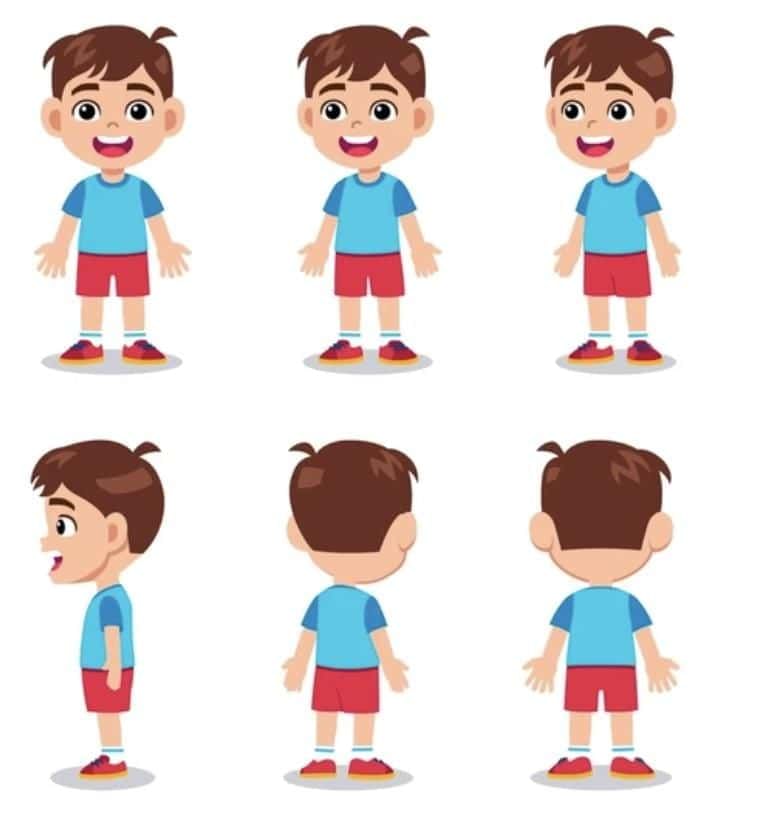Angles as Turns Chapter Notes | Mathematics (Maths Mela) Class 5 - New NCERT PDF Download
| Table of contents |

|
| Different Types of Angles |

|
| Angle Measuring Tool |

|
| Angles as Turn on a Clock |

|
| Fun with Turns |

|
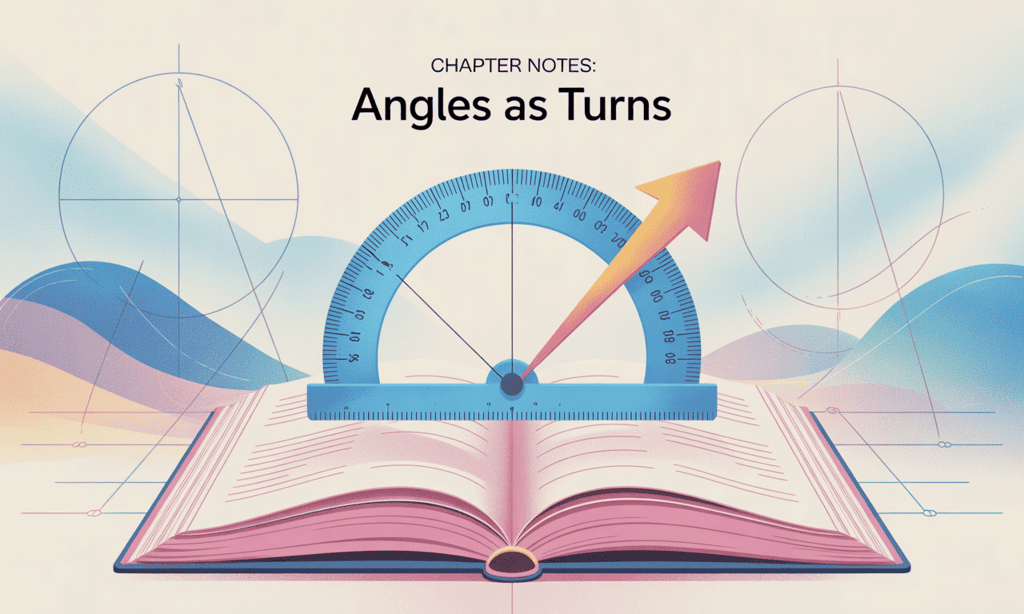
Angles are all around us — when we turn a corner, open a door, spin a wheel, or even move the hands of a clock. An angle is formed when one line turns around a fixed point to meet another line.
In this chapter, we will learn about:
Turns (full, half, quarter),
Types of angles (right, acute, obtuse, straight),
Measuring turns and angles, and
Directions of turning (clockwise and anti-clockwise).
By the end, you’ll see that angles are everywhere in our world—in games, movements, and even the way we face different directions!
Let’s begin with a simple observation.
Can you recognise the child in the picture who has made a full turn? Who has made a half turn? How do you know?
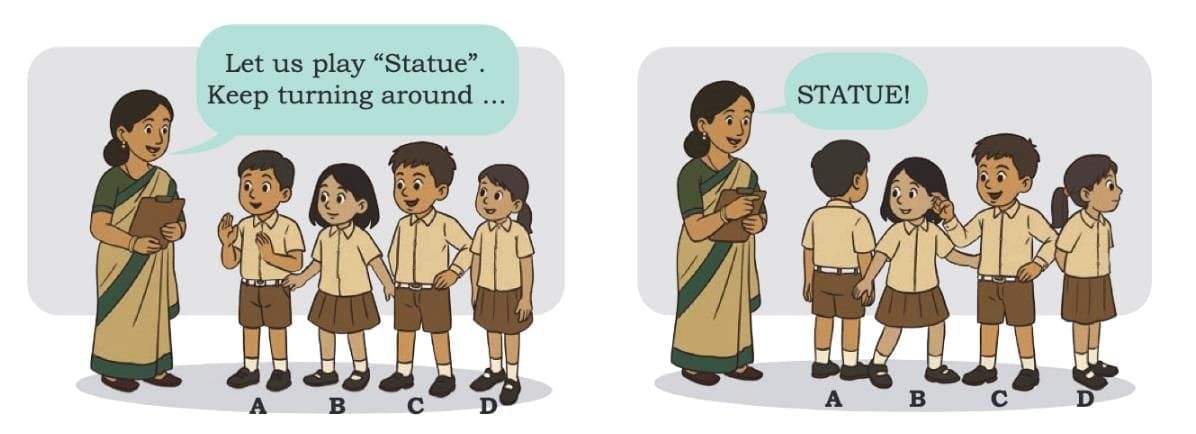
The child in the picture that has made a full turn is "C" and the child in the picture who has made a half turn is "A"
Lets see how we know this.
Turns
A turn means changing direction by moving around a fixed point.
1. Full Turn
When you spin all the way around and come back to where you started, it’s called a full turn.
Example: A giant wheel makes a full turn when it returns to its starting position.
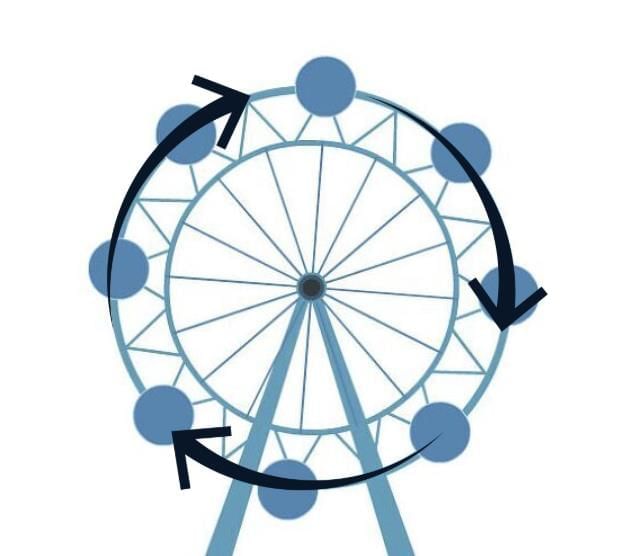
2. Half Turn
If you spin halfway around and end up facing the opposite direction, it’s a half turn.
Example: The hands of a clock- When the minute hand moves from 12 to 6, it makes a half turn.
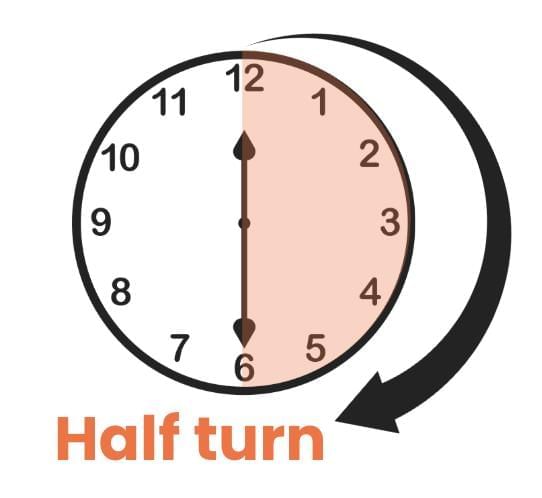
3. Quarter Turn
A small turn, like turning to one side, is a quarter turn. A quarter turn is one-fourth of a full turn.
- Example: Imagine you are standing and facing north. If you make a quarter turn to the right, you will face east.
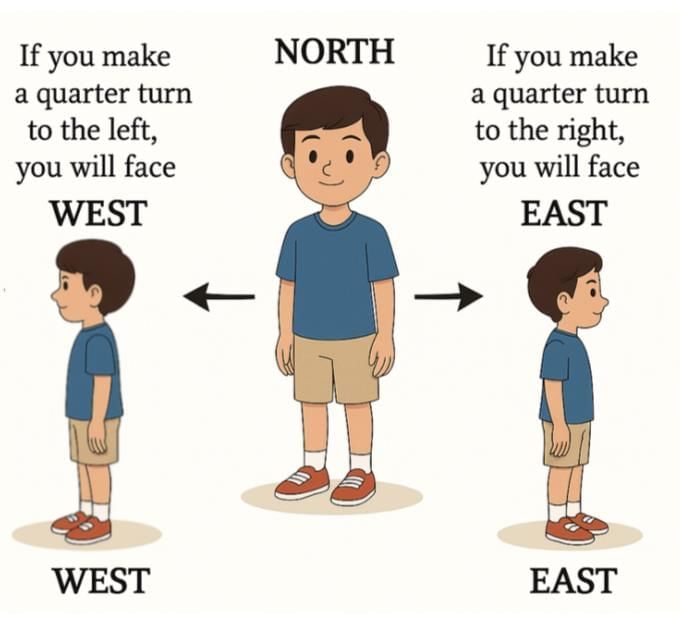
Everyday Objects and Turns
- Taps: When you open or close a tap, you turn it.
- Doors with hinges: Doors swing open and close, making turns.
- Scissors: When you open and close scissors, they make turns.
- Clothes clip: When you open a clothes clip, it makes a turn.
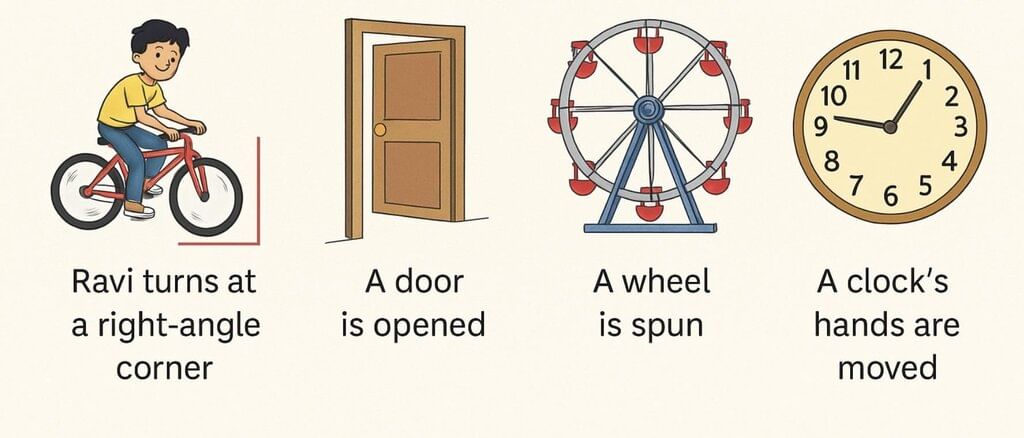
Think about the maximum turn these objects can make. Some can make a quarter turn, some a half turn, and some even a full turn!
Different Types of Angles
Angles are formed when two lines or objects meet at a point and turn.
Let’s learn about the different types of angles with the help of Pragya and her straws. She keeps the green straw steady and turns the yellow straw around.
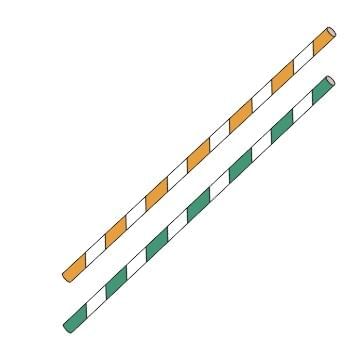
Let’s observe the different turns Pragya made:
1. Right Angle
When the yellow straw makes a quarter (¼) of a full turn, it forms a right angle.
A right angle looks like the corner of a square or a book.
It has an ‘L’ shape.
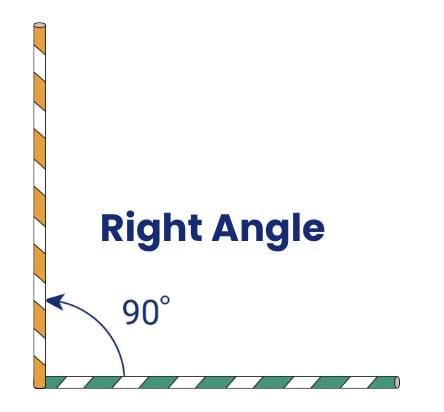
2. Acute Angle
If the yellow straw makes less than a quarter turn, it forms an acute angle.
Acute angles are smaller than a right angle.
Think of a sharp point, like the tip of a pencil.
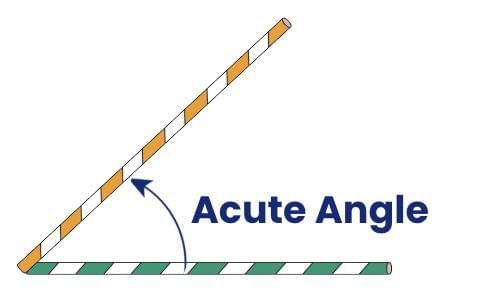
3. Obtuse Angle
When the yellow straw makes more than a quarter turn but less than a half turn, it forms an obtuse angle.
Obtuse angles are bigger than a right angle but smaller than a straight angle.
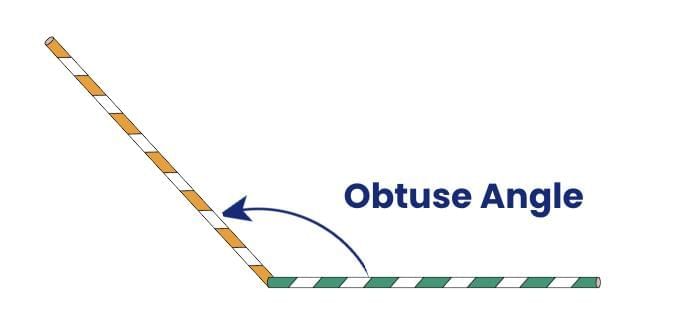
4. Straight Angle
If the yellow straw makes two quarter turns (a half turn), it forms a straight angle.
A straight angle looks just like a straight line.

Angle Measuring Tool
Measuring Turns and Angles
Wouldn't it be great if we could measure turns and angles? Well, we can! Let's make our own tool to measure turns.
(a) Making Your Tool
- Take a tracing paper and cut out a circle from it.
- Fold the circle carefully to make 8 equal parts. Imagine folding it in half, then in half again, and then in half one more time.
- Attach a straw to the very center of the circle.
- Mark a starting point on the edge of the circle.
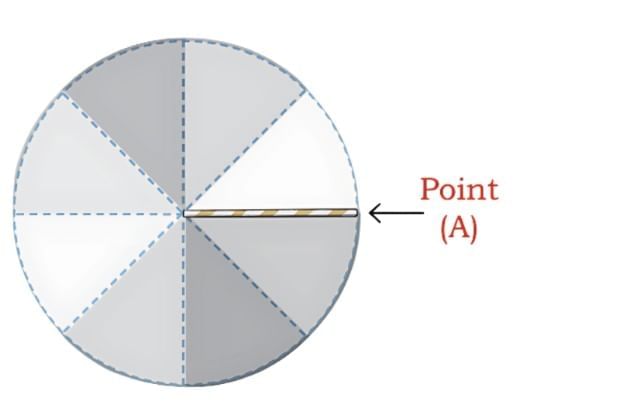
Now you have your very own angle measuring tool!
(b) Using Your Tool
Let's try using your new tool to understand turns:
- Show a 1/8 turn: Move the straw from the starting point to the first fold line. That's a 1/8 turn.
- Show a 2/8 turn (which is 1/4 turn): Move the straw to the second fold line. This is a quarter turn, or a right angle!
- Show a 3/8 turn: Move the straw to the third fold line.
- Show a 4/8 turn (which is 1/2 turn): Move the straw to the fourth fold line. This is a half turn, or a straight angle!
Keep turning the straw by 5/8, 6/8, 7/8, and 8/8. When you reach 8/8, you have completed a full turn!
Making a Permanent Tool
You can cut out parts of your folded circle (like 1/8 part and 2/8 parts and paste them on a thicker paper or board. These can be used as handy angle measuring tools.
Angles as Turn on a Clock
A clock face is a perfect example of turns and angles.
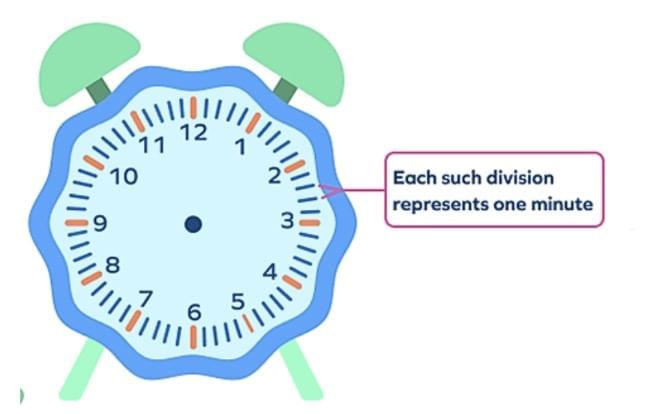
The whole clock is a full turn (360°), divided into 12 equal parts by the hour numbers.
So, 1/12 of a full turn = moving from one number to the next on the clock.

Examples
When the minute hand moves from 12 to 1, it makes a 1/12 turn.
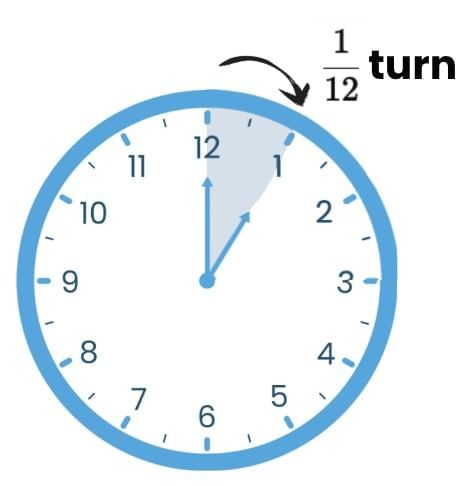
From 12 to 3, it makes a 3/12 turn = 1/4 turn (90°, a right angle).
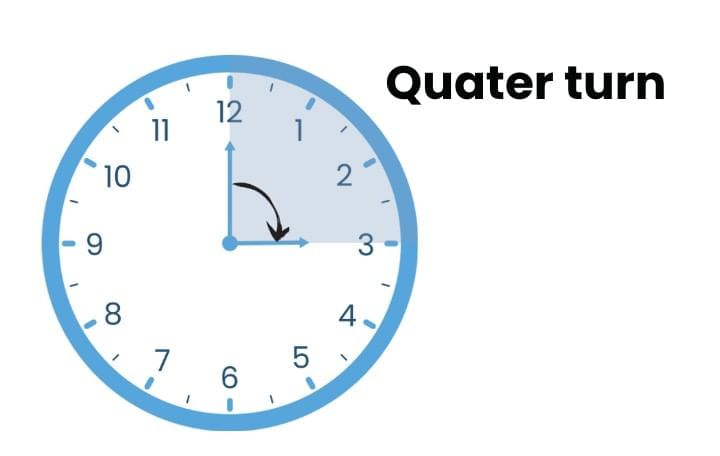
From 12 to 6, it makes a 6/12 turn = 1/2 turn (180°, a straight angle).
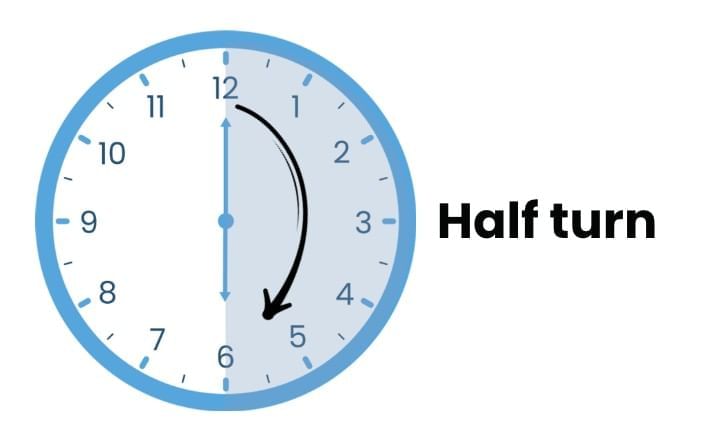
From 12 back to 12, it makes a 12/12 turn = full turn (360°).
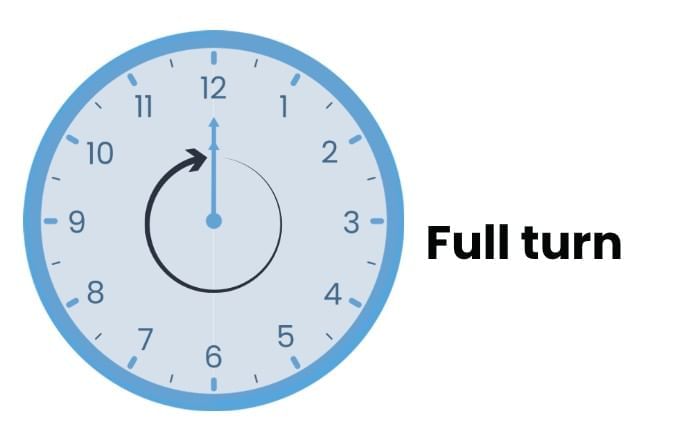
Which Direction?
1. Clockwise Movement
This is the direction in which the hands of a clock move.
Starting from 12, they go to 1, then 2, then 3, and so on.
Many everyday objects, like screws or bottle caps, also turn in this clockwise direction when tightened.
2. Anti-clockwise Movement
This is the opposite direction of a clock’s hands.
Starting from 12, the movement goes to 11, then 10, then 9, and so on.
Some objects, like loosening a screw or turning certain knobs, involve anti-clockwise movement.
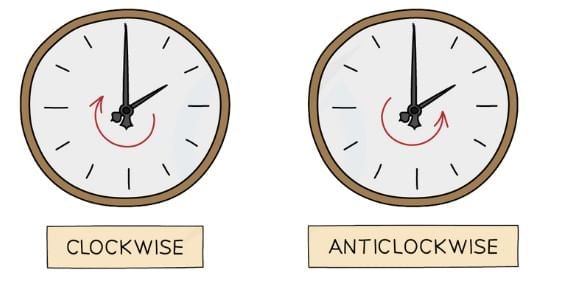
Quick Tip: Clockwise means moving to the right (like a clock), and anti-clockwise means moving to the left (opposite of a clock).
Fun with Turns
Have you ever played a game where the teacher says, “Turn right!” or “Turn left!”?
That’s exactly what fractional turns are all about!
Imagine you are standing facing North.
If you turn a little (¼ turn), you’ll face East.
If you turn halfway around (½ turn), you’ll face South.
If you turn even more (¾ turn), you’ll face West.
And if you spin all the way (a full turn), you’re back to North again!
Turns can happen in two directions: clockwise (like a clock’s hands) or anti-clockwise (the opposite way).
Examples make learning easier — so let’s try one together.
1. The children in a class are playing a game in which the teacher tells them the direction in which they should rotate. Complete the table by filling the direction the children will face on completing the given turns. The starting direction is given in the table.
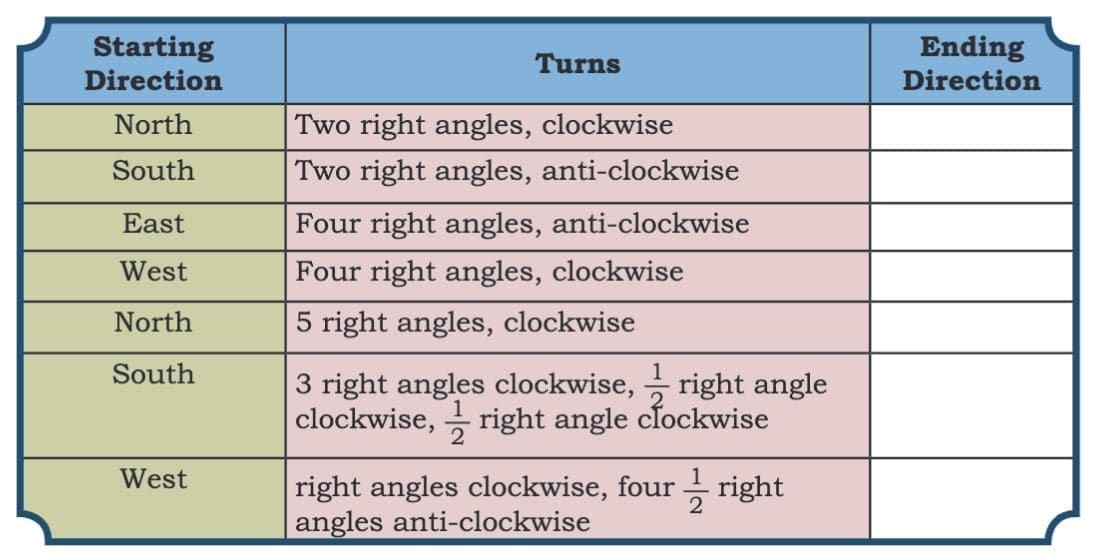
Solution: 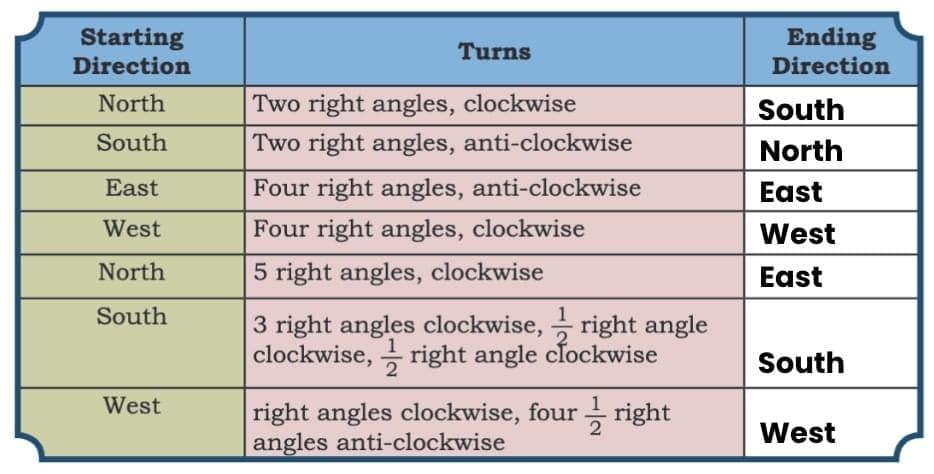
|
40 videos|276 docs|7 tests
|
FAQs on Angles as Turns Chapter Notes - Mathematics (Maths Mela) Class 5 - New NCERT
| 1. What are angles and how are they measured in terms of turns? |  |
| 2. What are the different types of angles based on their measurement? |  |
| 3. How do you use a protractor to measure angles accurately? |  |
| 4. What is the significance of angles in real-life applications? |  |
| 5. How can understanding angles help in solving mathematical problems? |  |

